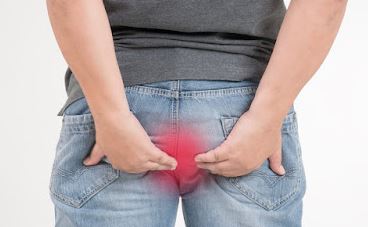A review article on the managements of Arshas (haemorrhoids)
DOI:
https://doi.org/10.21760/jaims.9.8.28Keywords:
Arshas, Haemorrhoids, Kshara Karma, Agni Karma, Shastra KarmaAbstract
A haemorrhoid is the most common affecting up to one quarter of all adults according to some estimates. Numerous interventions exist for their management, ranging from topical and medical therapies to outpatient treatments and surgical interventions that aim to fix or excise. The word Arsha is self-explanatory, indicating that the disease troubles a person like an enemy. Arshas can be corelated to haemorrhoids in modern science. Arshas is clinically an engorged condition of haemorrhoidal venous plexus characterized by prolapsed mass per anum, bleeding per anum mainly. In contemporary science there are treatments for haemorrhoids like sclerotherapy, banding, laser ablation, lifestyle modifications, surgical procedures like haemorrhoidectomy and other invasive technique. In Ayurvedic tests Chaturvidha Chikitsa is said, such as Bheshaja (medicinal), Kshara Karma (caustic treatment), Agni Karma (thermal hear burn) and Shastra Karma (surgery). In this review article, treatments from modern as well as Ayurvedic texts are documented so that proctologists around the world get a better understanding about the disease and its exact treatment modalities in both the sciences.
Downloads
References
Shastri AD. Sushruta Samhita Vol-I. Ayurveda Tatwa Sandeepika Hindi Commentary. Nidanasthana Adhayaya 2/17. Varanasi; Chaukhambha Sanskrit Sansthana; 2010.
Murthy S. Astanga Hridaya Vol II (Nidana sthana 7/1). Varanasi; Chowkhamba Krishnadas academy; 2006. p.66
Johanson, J. F., & Sonnenberg, A. (1990). The prevalence of hemorrhoids and chronic constipation: an epidemiologic study. Gastroenterology, 98(2), 380-386.
Rogozina, V. A. (2002). Hemorrhoids. Eksperimental'naia i Klinicheskaia Gastroenterologiia= Experimental & Clinical Gastroenterology, (4), 93-6.
Johanson, J. F., & Sonnenberg, A. (1990). The prevalence of hemorrhoids and chronic constipation: an epidemiologic study. Gastroenterology, 98(2), 380-386.
Parks, A. G. (1955). De haemorrhoids; a study in surgical history. Guy's hospital reports, 104, 135-150. 5. Keighley, M. R. (1993). Surgery of the Anus. Rectum and Colon, 1, 295-298
Anonymous, Susruta Samhita with English translation of text and Dalhana’s commentary along with critical notes, Sharma P V, Reprint, 2005. Choukhambha Visvabharati, Varanasi: Chikitsa Sthana, Chapter 6, Sloka 3; p.46
Acharya YT. Sushrutha Samhita with ‘Nibandha Sangraha’ Commentary of Dalhanacharya and ‘Nyayachandrika Panjika’ of Gayadasa (Nidana sthana 2/4). Varanasi; Chaukhambha Orientalia; 2009. p. 271.
Murthy K.R. Ashtanga Hrudayam Text English Translation Vol.- II (Chapter 7/10-14). Varanasi; Chaukhambha Krishnadas Academy; 2007. p. 68.
Acharya YT. Sushrutha Samhita with ‘Nibandha Sangraha’ Commentary of Dalhanacharya and ‘Nyayachandrika Panjika’ of Gayadasa (Nidana sthana 2/4). Varanasi; Chaukamba Orientalia; 2009. p. 271.
Acharya YT Charaka Samhita (Chikitsa Sthana 14/9,19,23). Varanasi; Chawkhambha Krishnadas Academy; 2010. p. 502-503.
Murthy K.R. Ashtanga Hrudayam Text English Translation Vol.- II (Chapter 7/21-22). Varanasi; Chaukhambha Krishnadas Academy; 2007. p. 70.
Shastri AD. Sushruta Samhita part-I Ayurveda Tatwa Sandeepika Hindi Commentary. Chikitsasthana 6/3 Varanasi; Chaukhamba Sanskrit Sansthana; Varanasi; 2010.
Pardeshi N. A Clinical Study to Assess the Efficacy of Tiladi Modak in the Management of Abhyantar Arsha w.s.r. to 1st & 2nd Degree Internal Hemorrhoids. International Ayurvedic Medical Journal.2018; 2(5): 1223- 1227.
Kumar A. A Clinical Study of Suran Pindi in Arsha (Haemorrhoids). World Journal of Pharmaceutical and Medical Research. 2019; 5 (7): 132-136















